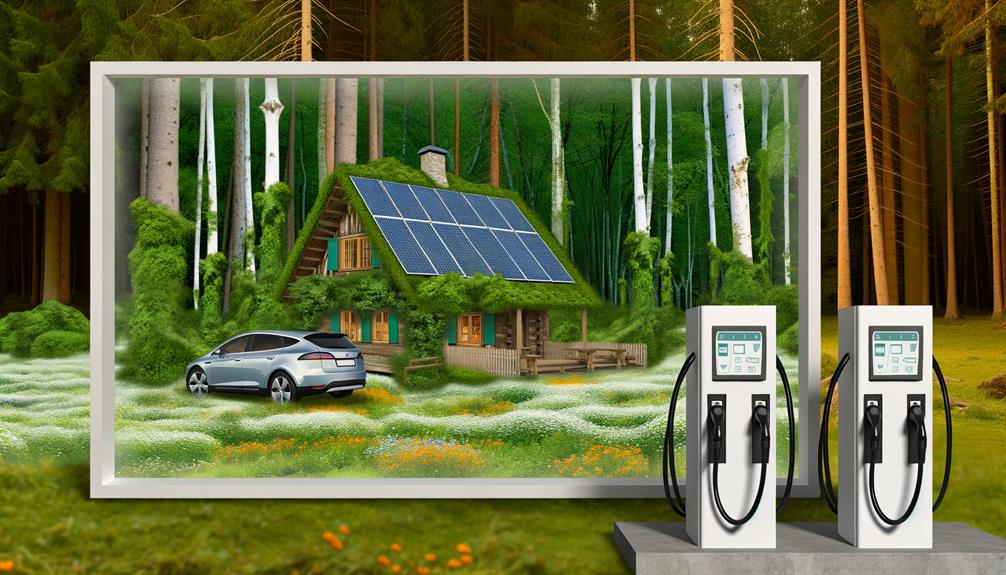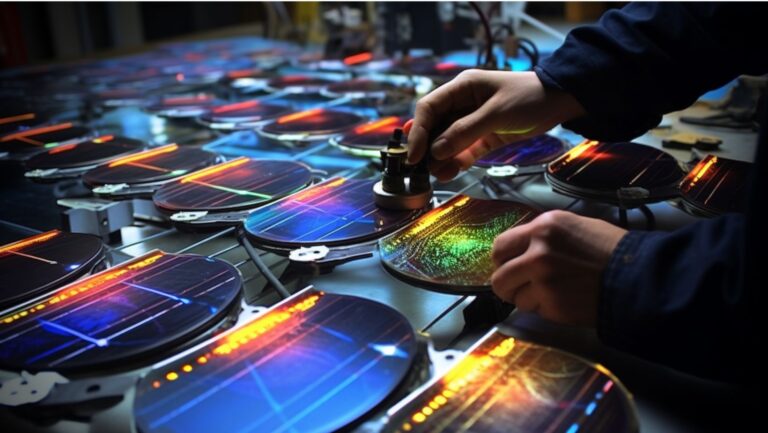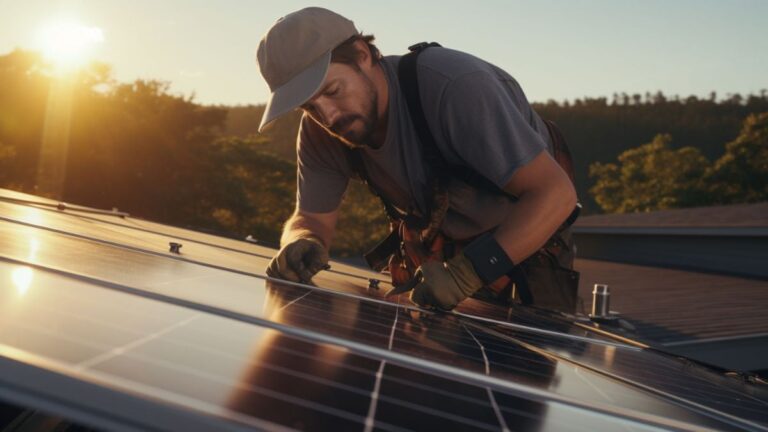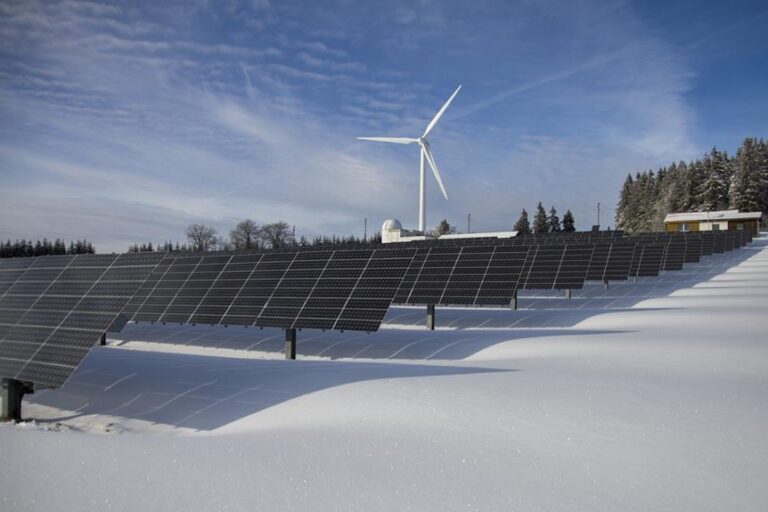Exploring Varieties of Off Grid Solar Systems
Imagine standing on a remote mountaintop, surrounded by untouched wilderness, with nothing but the sound of the wind rustling through the trees.
In a world where electricity is as essential as breathing, how would you power your life in this secluded paradise? Off-grid solar systems offer a solution, harnessing the sun’s energy to provide power in the most remote corners of the earth.
But with so many varieties to choose from, where do you begin? In this discussion, we will explore the different types of off-grid solar systems and discover the options that best suit your energy needs.
From monocrystalline to polycrystalline panels, from solar battery storage to hybrid power systems, there are endless possibilities awaiting your exploration.
So, come along on this journey and uncover the potential of off-grid solar systems.
Key Takeaways
- Monocrystalline solar panels offer exceptional efficiency and power output, making them ideal for residential and commercial installations.
- Polycrystalline solar panels are a cost-effective choice for residential and commercial installations, offering a practical balance between efficiency and affordability.
- Thin-film solar panels are a versatile and cost-effective option, performing better in low light conditions and suitable for curved or irregular surfaces and portable installations.
- Solar battery storage systems are an essential component of off-grid solar systems, allowing for the storage of excess solar energy for use during periods of low sunlight or at night, reducing reliance on the grid and achieving energy independence.
Monocrystalline Solar Panels
Monocrystalline solar panels, with their sleek black appearance and exceptional efficiency, are the ideal choice for residential and commercial installations. These panels are a crucial component of off-grid solar systems, which generate electricity from solar energy and store excess power for later use.
Monocrystalline panels, made from single-crystal silicon, offer higher efficiency and power output compared to other panel types. They come in various sizes and shapes, allowing for easy integration into different solar energy systems. To store excess electricity generated, battery storage systems are used, along with charge controllers to regulate the charging process.
Monocrystalline panels convert DC electricity generated by sunlight into AC power for use in homes and businesses. Their durability, long lifespan, and ability to perform well in diverse climates make them a reliable choice for off-grid solar systems.
Polycrystalline Solar Panels
With their lower cost and practical balance between efficiency and affordability, polycrystalline solar panels are a popular choice for residential and commercial solar installations. These panels are made from multiple silicon crystals melted together, resulting in a blue hue. They offer a good balance between efficiency, cost, and longevity. While they have a slightly lower efficiency compared to monocrystalline panels, they are a cost-effective option for many solar applications.
Polycrystalline panels are a durable and reliable choice for off-grid solar systems, particularly in remote locations where access to the grid is limited. When combined with energy storage in a battery bank, these panels can provide a reliable source of power. By utilizing off-grid solar power systems with polycrystalline panels and energy storage, individuals can reduce their carbon footprint and achieve energy independence.
Thin-Film Solar Panels
Thin-film solar panels are a versatile and cost-effective option for off-grid solar systems. They offer a lightweight and flexible design for various applications. These panels are made by depositing thin layers of photovoltaic materials onto a substrate like glass, metal, or plastic.
While they have lower efficiency compared to traditional crystalline silicon panels, thin-film panels perform better in low light conditions and are more affordable. They are also suitable for curved or irregular surfaces and portable installations.
Common materials used in thin-film panels include amorphous silicon, cadmium telluride, and copper indium gallium selenide, each with its own unique performance characteristics. Although they have a shorter lifespan, their lower cost and versatility make them a popular choice for certain off-grid applications.
When combined with energy storage batteries, thin-film panels provide sustainable power for off-grid systems.
Solar Battery Storage Systems
Solar battery storage systems are an essential component of off-grid solar systems, allowing you to store excess solar energy for use during periods of low sunlight or at night. Here are some important facts to consider about solar battery storage systems:
- Energy Independence: With a solar battery storage system, you can reduce your reliance on the grid and have access to electricity even when the sun isn’t shining.
- Types of Batteries: Lithium batteries, such as LiFePO4, are popular for their long lifespan, typically lasting 10+ years. However, they can be a more expensive upfront investment.
- Maintenance and Care: Regular maintenance and proper care, including the use of a solar charge controller, can help extend the lifespan of solar batteries.
- Cost: The cost of solar battery storage systems varies based on factors such as capacity, brand, and quality. Prices can range from a few thousand to tens of thousands of dollars.
Solar battery storage systems provide a reliable and efficient way to store and use solar energy, giving you the freedom to reduce your dependence on the grid and enjoy the benefits of off-grid solar systems.
Hybrid Solar Power Systems
To further expand upon the efficiency and reliability of off-grid solar systems, let’s now explore the world of hybrid solar power systems.
Hybrid solar systems combine solar panels with another power source, such as a generator or wind turbine, to ensure continuous power supply. These systems are designed to provide electricity even during periods of low sunlight or when solar energy alone may not be sufficient.
By incorporating a solar battery, energy consumption can be optimized, allowing for greater energy management and reducing reliance on grid power. Hybrid solar systems offer a cost-effective and secure solution for residential solar, making them suitable for areas with variable weather patterns or fluctuating energy demands.
Frequently Asked Questions
What Are the Different Types of Off-Grid Solar Power Systems?
There are three different types of off-grid solar power systems: stand-alone, hybrid, and direct. Stand-alone systems are independent of the power grid, while hybrid systems combine solar with other energy sources. Direct systems are connected to the grid but have battery backup.
How to Design Solar Off-Grid System?
To design a solar off-grid system, start by calculating the size of the system based on your energy needs. Choose components like panels, inverters, batteries, and charge controllers carefully. Consider electrical wiring, mounting, and maintenance. Plan for future system expansion and prioritize efficiency.
How Do I Choose an Off-Grid Solar System?
To choose an off-grid solar system, assess your energy needs, location, and sun exposure. Consider off-grid system components, sizing, installation, and maintenance. Compare advantages and disadvantages of off-grid versus grid-tied systems. Explore battery options for remote locations and tiny homes.
How Much Does a 10kw Solar System Cost?
A 10kw solar system typically costs between $15,000 to $50,000 for installation. It requires regular maintenance but offers long-term cost effectiveness, energy storage options, government incentives, and positive environmental impact. Its performance varies with weather conditions.
Conclusion
Exploring the varieties of off-grid solar systems is like navigating a vast landscape of renewable energy options. Just as each terrain offers its own challenges and opportunities, each type of solar panel and storage system has its strengths and weaknesses.
By carefully considering factors such as energy needs, location, and budget, individuals can find the ideal off-grid solar system that empowers them to harness the power of the sun and embrace a sustainable and independent energy future.






